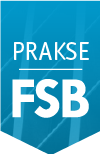International Exchange
Course details
Student Mobility > Programmes and Courses > Courses in English > Course detailsDies and Moulds for Polymer Processing
- Teaching: Completely taught in English
- ECTS: 5
- Level: Graduate
- Semester: Summer
- Prerequisites:
- None
- Load:
Lectures Exercises Laboratory exercises Project laboratory Physical education excercises Field exercises Seminar Design exercises Practicum 30 15 15 0 0 0 0 0 - Course objectives:
- Systematisation of tools and moulds for polymer processing. Familiarize the students with tasks related to die and mould design. Product technical check. Systemic approach to die and mould design. Modern computer tools for die and mould design.
- Student responsibilities:
- Grading and evaluation of student work over the course of instruction and at a final exam:
- Checking of theoretical knowledge through colloquium or final exam. Checking of practical knowledge through seminar.
- Methods of monitoring quality that ensure acquisition of exit competences:
- Recording of attending lectures and active participation of students in discussions during lectures. Continuous monitoring of consultations during learning and seminar preparation.
- Upon successful completion of the course, students will be able to (learning outcomes):
- After sucessful lecturing student will be able to: -evaluate a mould for injection moulding of polymers as a system -estimate design solutions for each partial mould function -rheological, mechanical and thermal mould evaluatuion - design a simple mould for injection moulding -select aproriate materials for mould manufacturing -generate appropriate technical documentation of mould
- Lectures
- 1. Introduction to die and mould design.
- 2. Systemic approach to die and mould design.
- 3. Die and mould central element of injection moulding system.
- 4. Influence of material and processing parameters on mould design.
- 5. Standard forms.
- 6. Decision diagrams.
- 7. Extrusion dies.
- 8. Cast moulds.
- 9. Moulds for injection moulding.
- 10. Dies for cold forming and thermoforming.
- 11. Blow moulds.
- 12. Moulds for reinforced products.
- 13. Special mould elements.
- 14. 3D modelling programs.
- 15. Die and mould surface finishing.
- Exercises
- 1. Product development.
- 2. Basics of mould cavity simulations.
- 3. Simulation of mould cavity filling.
- 4. Requirements on the product.
- 5. Die design for chosen example.
- 6. Visit to toolshop for extrusion dies manufacturing.
- 7. Mould design for chosen example.
- 8. Mechanical calculation of injection mould.
- 9. Rheological calculation of injection mould.
- 10. Thermal calculation of injection mould.
- 11. Mould temperature control system.
- 12. Guiding and centering system.
- 13. Special mould elements.
- 14. Final mould design for chosen example.
- 15. Visit to toolshop for injection mould manufacturing.
- Compulsory literature:
- I. Čatić: Izmjena topline u kalupima za injekcijsko prešanje polimera, DPIG, Zagreb, 1985.
M. Nadj: Polimerni materijali, konstrukcija i prerada, Multigraf, Zagreb, 1991.
G. Menges, P. Mohren: Spritzgiess-Werkzeuge, Carl Hanser Verlag, Muenchen, 1998.
D. Godec: Doprinos sustavnosnom razvoju kalupa za injekcijsko prešanje plastomera, Magistarski rad, Fakultet strojarstva i brodogradnje, Zagreb, 2000.
Jones, P: The Mould Design Guide, Smithers Rapra Technology, Shawbury, 2008. - Recommended literature:






